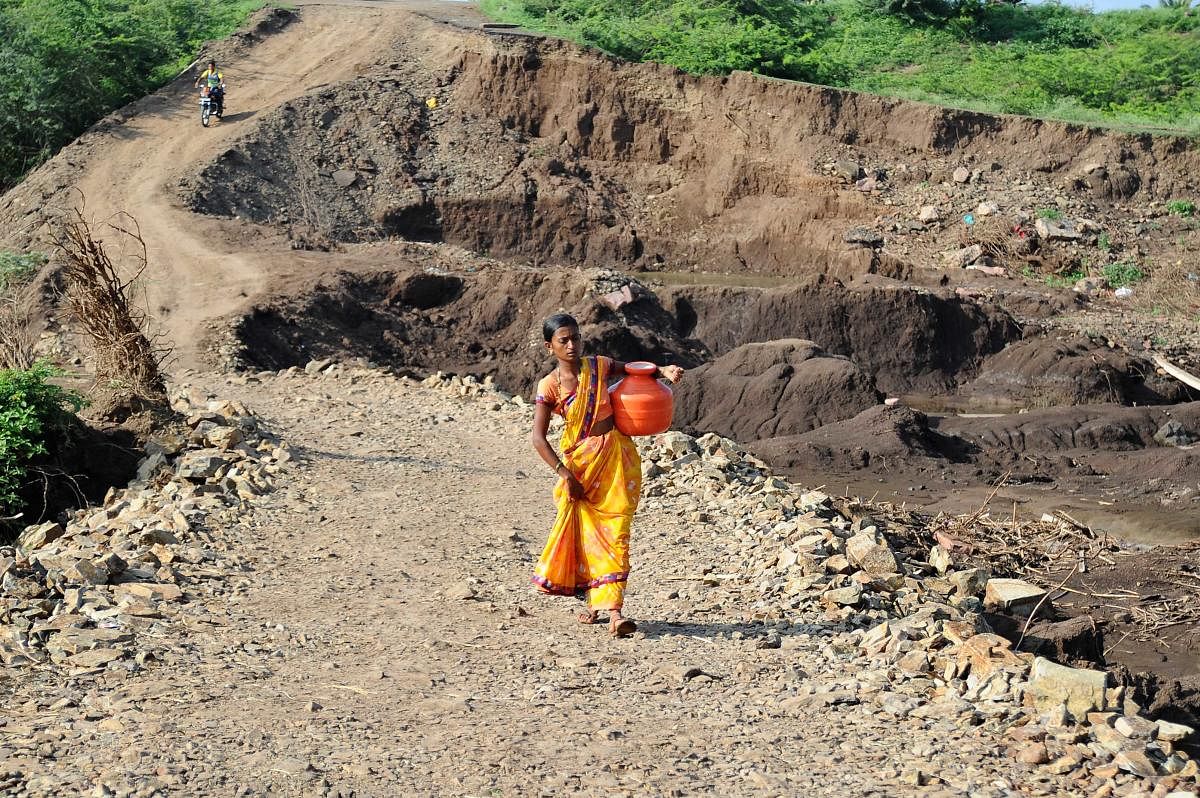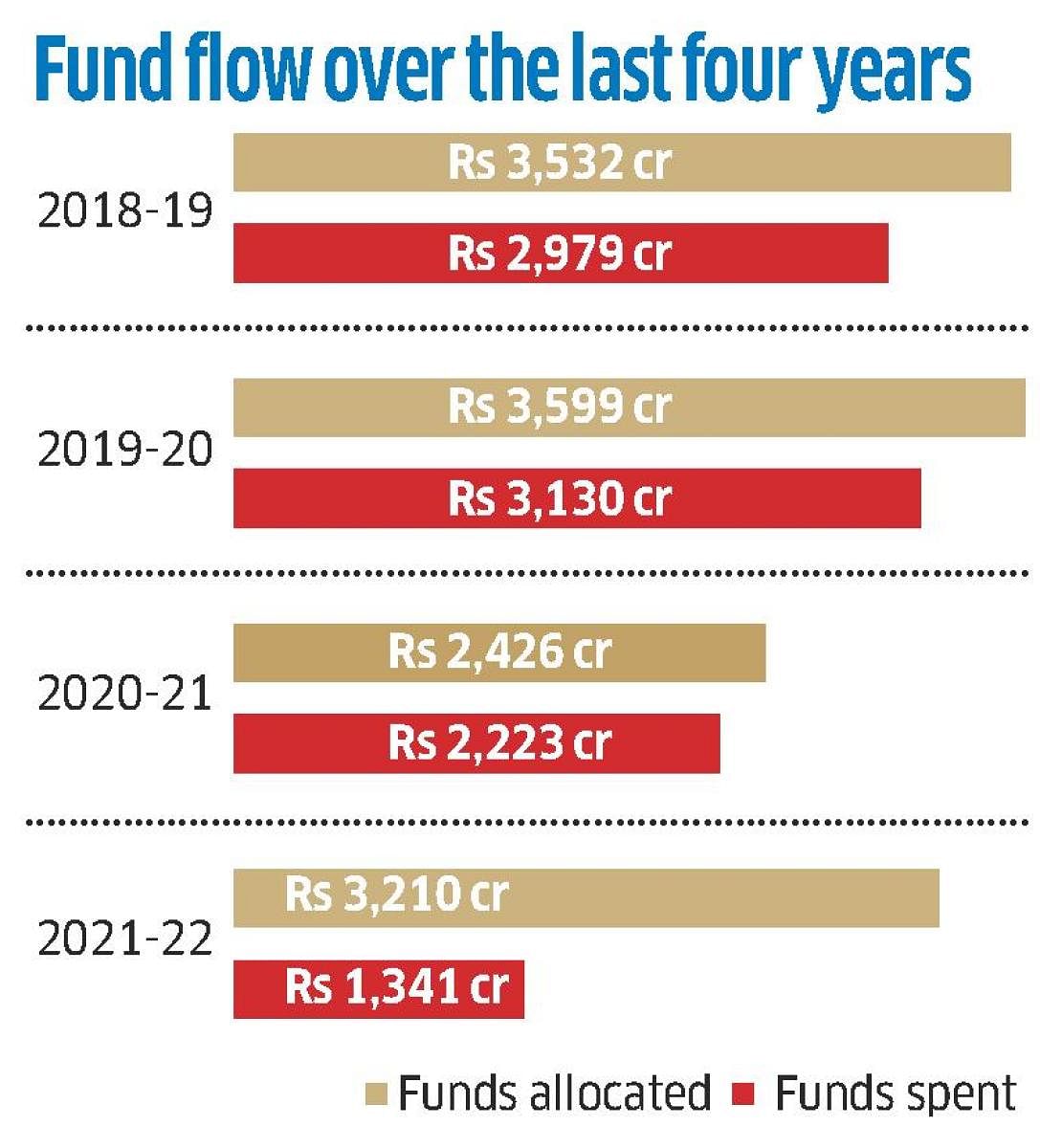

Karnataka will update its backwardness indicators to identify ‘aspirational taluks’ under a new development plan pitched by Chief Minister Basavaraj Bommai.
One wonders what the government achieved under a previous plan on which thousands of crores of rupees were spent over a 14-year period.
In the 2022-23 budget, Bommai said the government will, for the first time, identify taluks performing below the state average on various developmental indicators.
These will be the aspirational taluks that will see ‘outcome-oriented’ efforts: improving quality of education in 93 taluks, strengthening health services in 100 taluks and alleviation of child malnutrition in 102 taluks. All at a total cost of Rs 3,000 crore.
A similar effort is on since 2007 when Karnataka decided to implement the D M Nanjundappa committee report on addressing regional imbalances in development.
The committee came up with 35 indicators to identify 114 taluks as backward, more backward and most backward.
Despite allocating Rs 38,675 crore, releasing Rs 31,155 crore and spending Rs 28,951 crore between 2007 and now, lawmakers and experts complain that the backwardness still remains.
Take the Kalyana Karnataka region, for example, as it has the most number of backward-most backward taluks.
“By now, the ‘most backward’ taluks should have at least improved to ‘more backward’ and the ‘more backward’ should have graduated to ‘backward’ status. Funds are allocated, but there is nothing to show on the ground,” Laxman Dasti of the Kalyana Karnataka Horata Samiti, a rights group, says.
A BJP legislator, requesting anonymity, says the funds allocated are mismanaged.
“They allocate funds without prioritising the specific infrastructure that a taluk needs. Half of this amount gets misused. In several places, there is no basic infrastructure like schools. There is no government wing identifying what each taluk lacks,” the lawmaker says.
According to developmental economist Krishna Raj, taluks identified by the Nanjundappa panel are backward “even to this day” on all human development indicators.
“The government is yet to come out with a comprehensive report assessing whether any taluk has reached the development indicators mentioned in the committee’s report,” he says.
Several complaints have been raised on the manner in which the Nanjundappa committee’s report is implemented.
Recently, Nagamangala MLA Suresh Gowda alleged in the Assembly that the government is diverting funds meant for backward taluks to other regions.
It is in this backdrop that Bommai is looking to roll out the new ‘aspirational taluks’ programme.
“The new list of aspirational taluks will be supplementary to what was identified earlier by the Nanjundappa committee report,” Karnataka State Policy & Planning Commission deputy chairperson B J Puttaswamy says.
“In addition to what was recommended in the committee’s report, the government will now also consider taluks that are lagging behind in sustainable development goals (SDGs),” he says.
Officials in the planning, programme monitoring & statistics department say that detailed estimates and action plans will be prepared soon.
But no government effort will yield results unless there is a “radical shift” in approach, Raj says.
“Each taluk has unique infrastructure needs and hence, a statewide common policy for aspirational taluks is counter-productive,” he cautions.
“Some taluks may need irrigation, others may need transport. There should be a development policy for each taluk.”
Kolar MLA Roopakala M urged the government to ensure that all departments have a presence in every taluk.
“If this is taken care of, people can access all government facilities in their respective taluks. Officials will immediately get an idea of what the taluk needs and these inputs can be used to develop infrastructure there,” she says.
“It is because of this shortcoming that there’s a lack of ground-level understanding of problems faced by people.”
Check out the latest videos from DH:
